How To Read Side Imaging On Your Fish Finder Like A Pro
- By: Tony Acevedo
- on
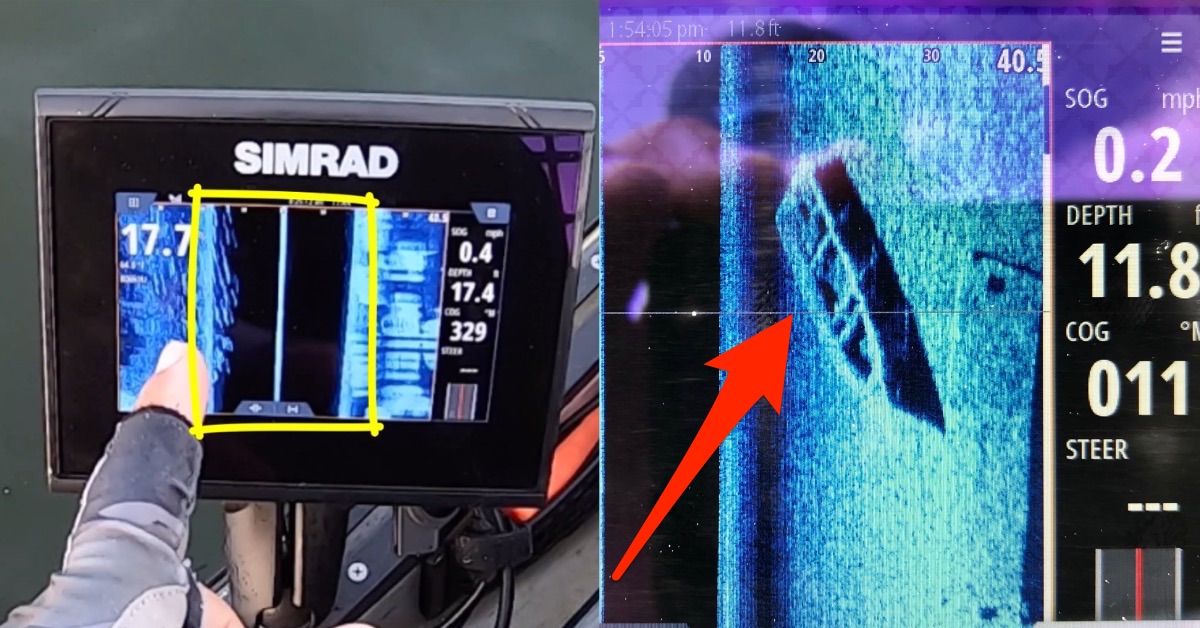
Reading the side imaging on your fish finder can be really confusing if you don’t know what you’re looking at.
And even if you do know what you’re looking at, but you don’t fully understand how your device works, you might wildly misinterpret where structure or a school of fish actually is.
In this video, I’m going to share with you what different things look like on your screen so you can know what you’re looking at, as well as how your device works, so you can pinpoint where things are on the bottom.
If you want to get better at using your fish finder to catch fish, you’re going to love this video.
Let’s dive in!
How To Understand Side Imaging [VIDEO]


When you first look at your screen, it can be very confusing.
What’s all the darkness in the middle?
Here’s a visual representation that really helped me understand how it works.
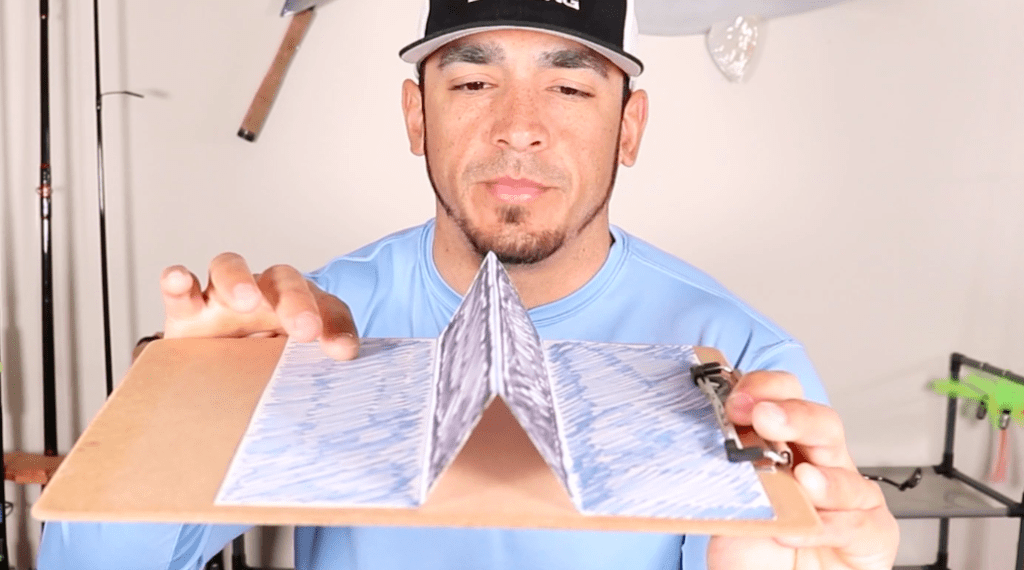
The darkness on your screen is right underneath your boat as your device scans out towards the sides.
So if you see part of a school fish on one side of the screen, as well as the other, that usually means that they’re right below you.
Now what happens if you look at your screen and most of it is black with just a little bit of color showing on the sides?
Well, the deeper the water you’re in, the wider the cone will be (the cone is represented in the picture above as the area under the folded up paper).
To see more of the bottom on your screen, you need to adjust the range in your device’s settings.
I like the keep the range at 40-50 feet on my device, which works for water up to about 20 feet deep.
Determining Where Objects Are In The Water

To determine how far away something on your depth finder is, you need to look at the numbers listed at the top of the screen, which are pointed out by the arrows in the picture above.
Those numbers are in feet, so you can tell that the boat is about 20-30 feet off to my right.
Another thing to keep in mind when determining where are objects are is knowing how the machine reads the bottom.
It always reads from top to bottom and there’s a slight delay, so, for instance, that boat in the picture above is actually behind me.
The slower you go, the closer the objects will be when they pop up on your screen, but if you’re flying through the water, by the time you see something you’ll probably be pretty far past it already.
Also, if you see a school of fish pop up on the screen when your boat is not moving, then they could be either in front or behind you.
The fact that the machine reads from top to bottom can throw you off if the school approaches from behind, so you’ll need to do a little searching both in front and behind you if you want to find that school.
What Objects Look Like On Your Screen
When you first get a fish finder it can be tough to know what you’re looking at, so below is an example of a school of fish
It’s a school of big black drum (one of those beasts is pictured below in the conclusion section!) and you can see the light spots where the sonar is reflecting off of them, as well as the dark “shadow” cast below them.
This was a clip from where I set my screen to just show one side, which helped me see more of the bottom, since my screen is small.
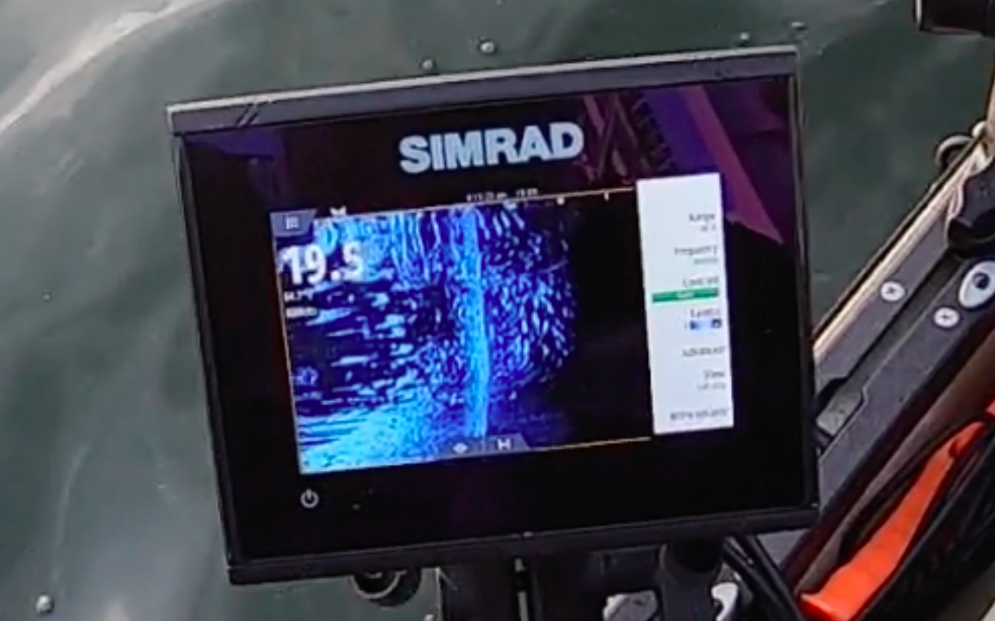
In the next image, you can see as I’m coming up on the fish, so there’s clearly a spot where there are no fish, and then where there are fish (which is circled).
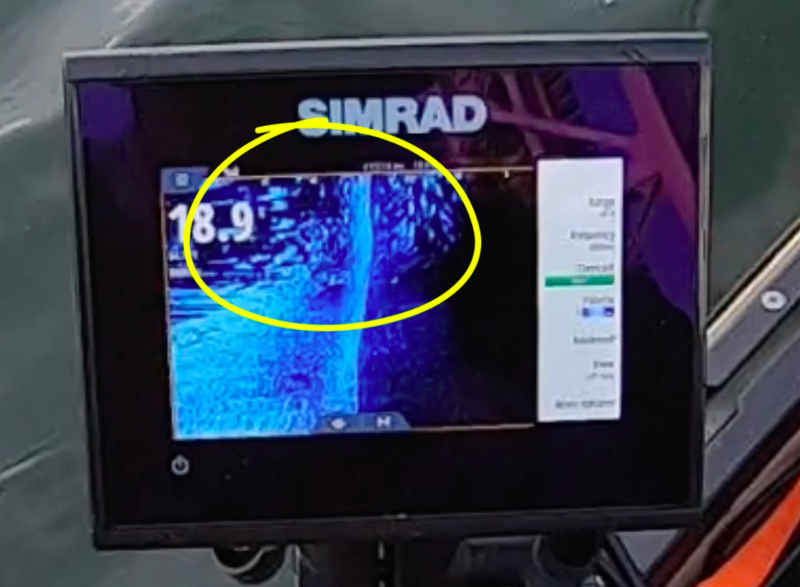
And in this final image below, you can see what structure looks like as you’re being still.
The machine is still scanning and the sonar is bouncing back, but since you’re not moving and neither is the structure, it’s not able to get an accurate read of the shape of whatever is down there.
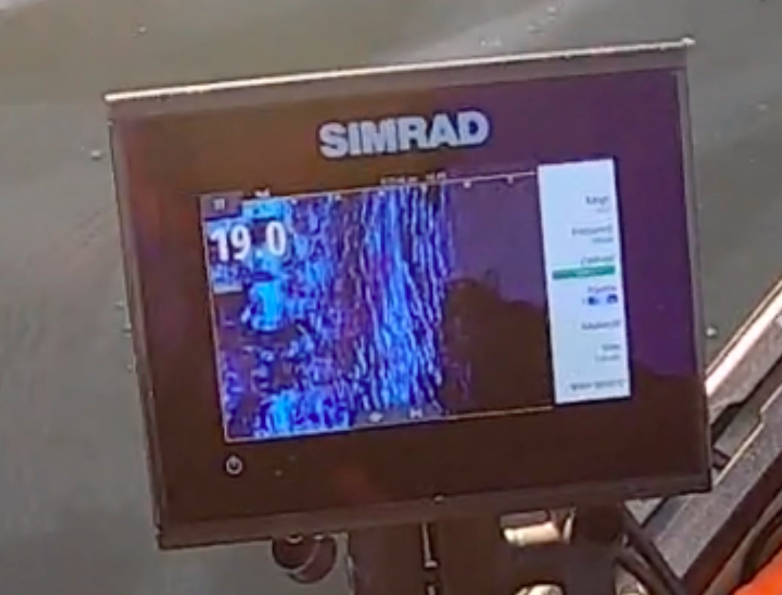
If this is happening, you just have to start moving again to get a more clear picture of what’s out there.
Conclusion
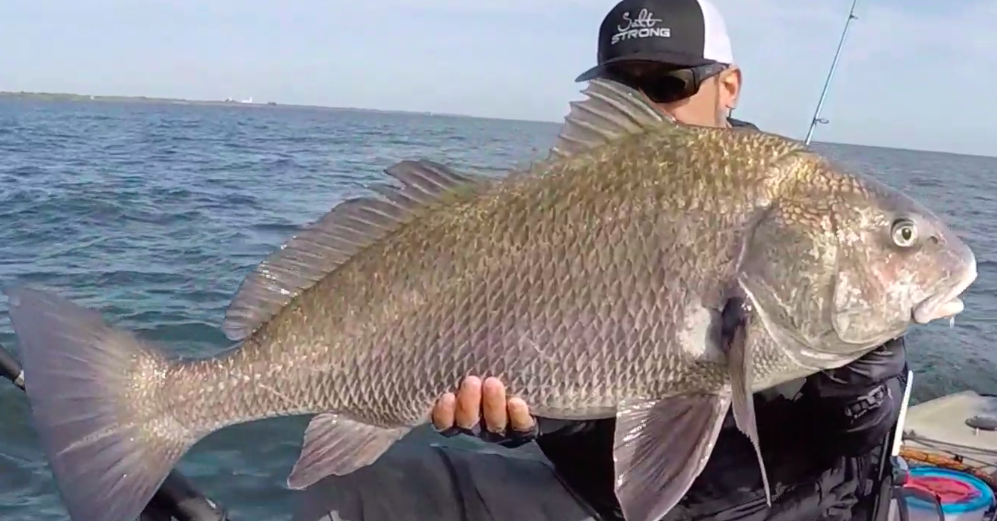
Although reading side imaging can be a little confusing at first, once you know what you’re looking for it can help tremendously in locating fish and structure.
If you want more help with reading fish finders, check out our Fish Finder Mastery course here.
You’ll learn everything you need to know about using fish finders to catch more fish, plus you’ll see actual on-the-water footage of these machines used to find fish.
Have any questions about side imaging?
Let us know in the comments below!
And if you know someone who wants to get better at reading side imaging, please TAG or SHARE this with them!
P.S. Want access to the best fishing spots, tips, and exclusive gear and discounts? Click here to join us and +12,000 other anglers in the Insider Club!
Stop Wasting Time On The Water!
Do what the “SMART ANGLERS” are doing and join the Insider Club.
Here’s what you’ll receive today when you join:
- Weekly fishing reports and TRENDS revealing exactly where you should fish ever trip
- Weekly “spot dissection” videos that walk you through all the best spots in your area
- Exclusive fishing tips from the PROS you can’t find anywhere else
- Everything you need to start catching fish more consistently (regardless if you fish out of a boat, kayak, or land).
Click here to join today.
Related articles:
Related categories:
STOP WASTING TIME ON THE WATER!
Do what the “SMART ANGLERS” are doing and join the Insider Club.
Here’s what you’ll receive today when you join:
- Weekly fishing reports and TRENDS revealing exactly where you should fish ever trip
- Weekly “spot dissection” videos that walk you through all the best spots in your area
- Exclusive fishing tips from the PROS you can’t find anywhere else
- Everything you need to start catching fish more consistently (regardless if you fish out of a boat, kayak, or land).
STOP WASTING TIME ON THE WATER!
Do what the “SMART ANGLERS” are doing and join the Insider Club.
Here’s what you’ll receive today when you join:
- Weekly fishing reports and TRENDS revealing exactly where you should fish every trip
- Weekly “spot dissection” videos that walk you through all the best spots in your area
- Exclusive fishing tips from the PROS you can’t find anywhere else
- Everything you need to start catching fish more consistently (regardless if you fish out of a boat, kayak, or land).











Awesome video Tony! Just got the ability to sidescan and had no clue what I was looking at. Makes perfect sense now 💪🏼. Love the folded paper illustration; that’s perfect. Great work.
Thank you for the great feedback Will!
Its a good starter video, it would e great if you can show difreunits/brands
Thank you for the feedback! Many brands will be very similar as far as what you are looking at.
Thanks Tony. You always give us great videos and tips. It took you a long time to figure all that out, so thanks for sharing your knowledge.
My pleasure Delbert!
Great video on side scan. I would love to see one on regular sonar
Thank you for the great feedback Jim!
Tony, this is the clearest explanation of side imaging I’ve seen. Very helpful. Thanks.
Thank you for the great feedback Tim! No problem!
Thanks Tony.
No problem!
good report
Thanks Nick!
Great video Tony! Thanks
No problem Michael!
Hey Tony, I enjoyed your video and picked up a couple tips, however, no matter how I change my settings, depth, etc. on my Garmin I am still not seeing images on my screen. I have vague darkness on both sides regardless of the speed I go. Any thoughts?
Hey Capt!
On my unit I had a similar issue when I first used it. Turns out I had to manually turn off Chirp for the side scan to work properly.
Thanks Tony, My son tried to explain the Side Imaging to me and I couldn’t quite understand it. The folded paper and the pictures of the boat and fish helped me understand it. I will get to try it out on Friday and see if I can determine what’s on the screen. Thanks again.
No problem Bennie! Good luck out there!